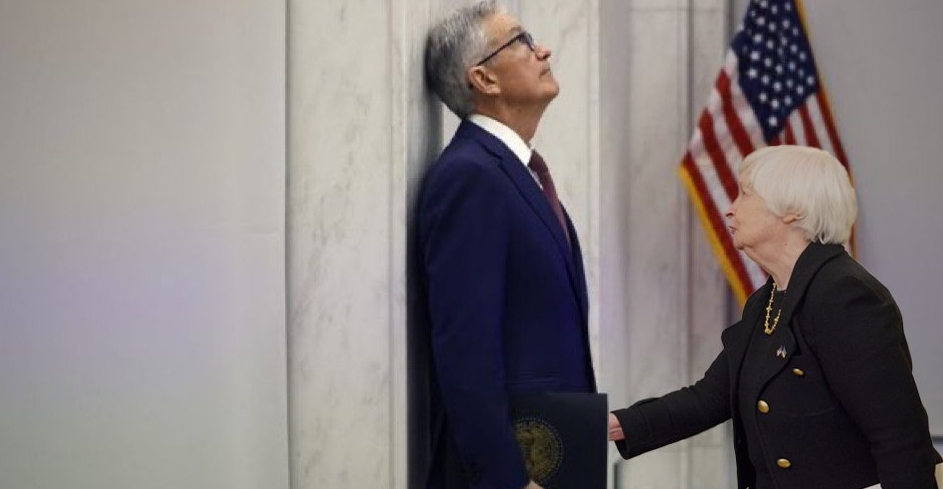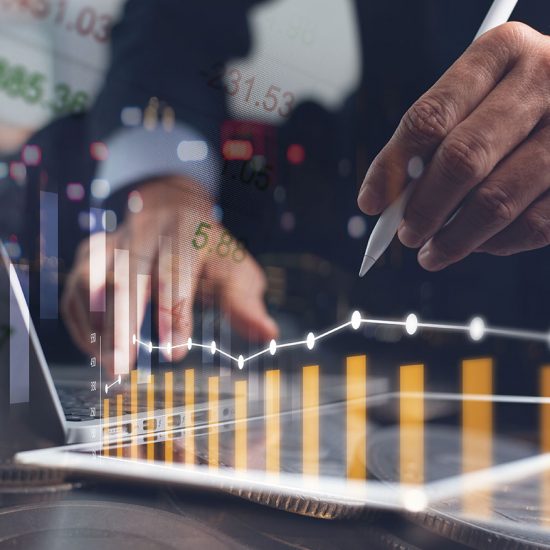For the last few years, Jerome Powell has remained constant: the Fed was ready to do anything necessary until inflation returned to its 2% target.
Today, Powell blinked.
While the Federal Reserve’s own optimistic projections place their preferred inflation measures staying above two percent until 2026, Powell used the December meeting to unravel the equivalent of a Mission Accomplished banner on the fight against inflation, potentially with the same results that awaited George W. Bush in Iraq. Rate hikes are over, rate cuts — plural — may be on the horizon in 2024.
According to the Fed’s dot plot, three potential cuts was the most popular opinion of FOMC members going into next year, with five other members expecting even more aggressive easing. While the Fed’s projections for their future actions have historically been unreliable, it represents a significant shift in the central bank’s mindset.
Though Powell’s messaging was grounded in the same propaganda preached by the Biden Administration and a large portion of the corporate financial press – that America’s economy has exceeded expectations and policymakers have achieved their desired soft landing – it would be extraordinarily naive to ignore the influence of next year’s presidential election on the Fed’s future actions.
While Powell has dutifully maintained the facade of Federal Reserve independence, the reality remains that politics have shaped the institution since its inception. While the Federal Reserve Chair has been willing to push back at some of the outlandish demands of progressive politicians, he likely has very little interest in working again for the man who originally appointed him to his position: Donald Trump.
At an event dedicated to the economy and the 2024 election in Ft. Meyers last month, Dr. Patrick Newman, who specializes in the history of American cronyism, predicted Powell’s pivot – partly due to the political factors at play. If the Fed were truly dedicated to taking the steps necessary to end the inflationary crises that continue to impoverish Americans, the result would be a recessionary event even the regime’s most dedicated mouthpieces would have a hard time covering up. A Fed pivot would be an in-kind donation to Biden’s re-election campaign on par with the assistance it received from social media companies in 2020.
Unfortunately for the Administration, the inflationary woes are still a daily cost failed by the voters he needs in 2024. While the impact current interest rates have had on driving up the costs of mortgages and auto loans has had a major impact on homeowners and industries highly reliant on customer finance, the catalyst for those policies — widespread price inflation — has not gone away. Even if one plays along with the Fed’s game of ignoring food and energy prices in their calculation of inflation rates, a decreasing rate of year-over-year inflation still means that the price increases of the last few years are still with us, surpassing salary increases over that same period.
As such, over 80 percent of Americans remain pessimistic about the US economy. In particular, social media trends have seen the economic anxiety of Millennial and Generation Z voters have gone viral.
While the Biden Administration will seek to bribe these targeted voters with continued efforts to forgive student loan debt and similar policies directed at younger generations that have been the most affected by the monetary recklessness of the post-2008 Fed, the willingness to accept the inflationary damage of the last several years will likely continue to undermine any political campaign trying to champion Bidenomics as a positive path forward.
The real question for 2024 will be what happens if the Fed’s projections are wrong, and their new dovish position helps re-ignite the inflationary pressures Powell warned about. In his own words, “History cautions against prematurely loosening policy.”
Such a scenario could require the current administration and its allies to “fortify” next year’s elections even more rigorously than 2020.




